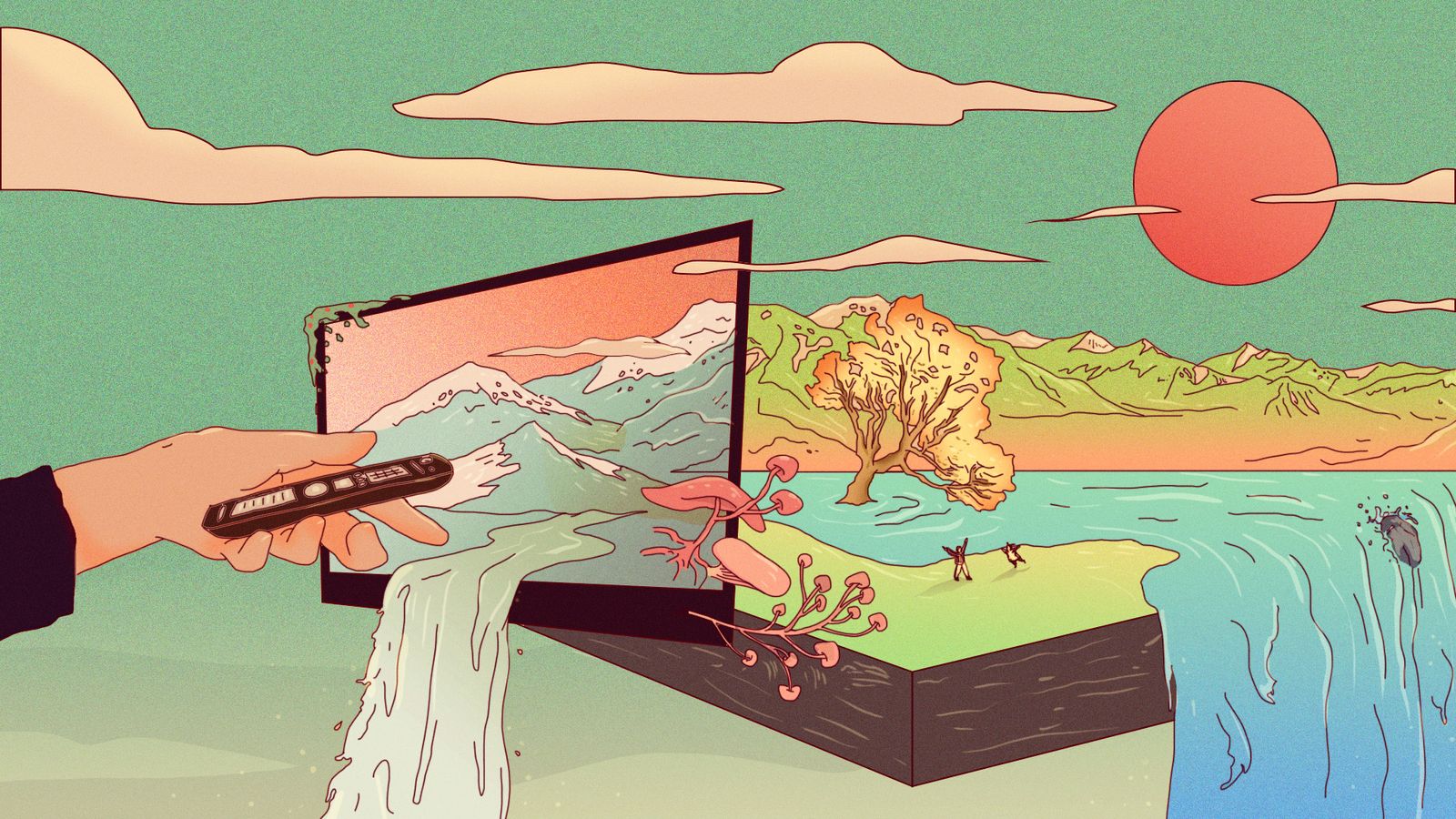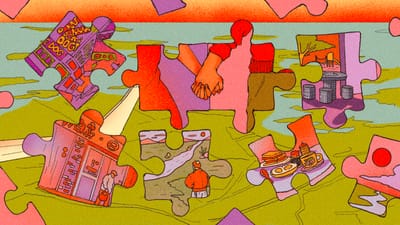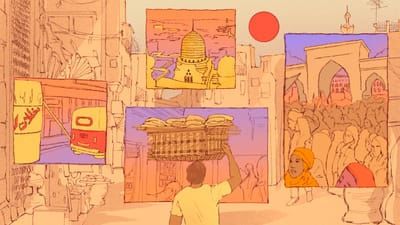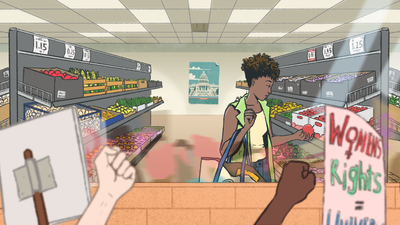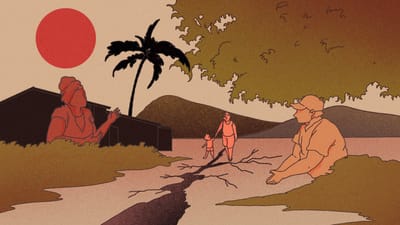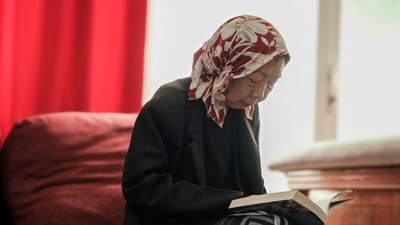Kia ora! This is the standard greeting here in Aotearoa, and it means “I wish you well” in te reo Māori. Te reo means “the language”, and is the language of the indigenous Māori people of Polynesian descent. Aotearoa (pronounced “ow tay-uh Row-uh”), or Land of the Long White Cloud, is their name for this land on which they settled sometime in the 13th to 14th century. Aotearoa initially referred only to the North Island, but today includes the South Island. Most readers will be more familiar with the name New Zealand, which is the anglicised version of a name that a Dutch cartographer working for the Dutch East India Company gave these islands in the 17th century. It hardly seems appropriate that an entire country on the other side of the world should be named after an obscure Dutch coastal province called Zeeland, but such was the absurdity of European colonisation.
I’m beginning this postcard with a brief language and history lesson, because I’ve learned how important it is to centre the Māori experience here. Even though they comprise only about 17 percent of the population of Aotearoa, they have a rich history and culture, and were the first guardians of this land. Last year, the Māori Party submitted to Parliament its petition to change the official name of New Zealand to Aotearoa, which had garnered about 70,000 signatures. I’m choosing to write this postcard as if the petition succeeded and the name-change had become official, because it’s something I would really love to see happen.
Most Pākehā (or non-Māori person of European descent) would rather keep the name New Zealand. “Aotearoa New Zealand” is as far as some are willing to go. Nevertheless, I have been impressed with the Pākehās’ willingness to use at least a smattering of te reo Māori daily. The Oxford English Dictionary recently added 47 English words from Aotearoa, most of them in te reo Māori, a sign of the growing influence of the language. The fact that te reo Māori is coming to my tongue more easily over time is a testament to how often I hear it. I sense a genuine affection for the language, even amongst Pākehā.
The growing recognition of the Māori in this country inspires me, because I believe that indigenous peoples around the world hold the key to human survival. One statistic that has been widely shared is that 80 percent of the world’s biodiversity is under the care and protection of indigenous peoples, even though they represent only six percent of the world’s population. For thousands of years, indigenous cultures have shown that they can exist in harmony with the rest of nature. This is more than can be said for industrial civilisation.
(Though the term “indigenous” is contested, and it’s important to resist the false binary of indigenous/non-indigenous, in discourse about indigeneity there is much credence given to “indigenous” values that existed before, and often in opposition to, those espoused after the Enlightenment by European colonialists.)
This is where I should warn you that this isn’t going to be one of those cheery postcards featuring beautiful scenery and relaxing vibes. Peak oil. Biodiversity loss. Climate change. Supply chain disruption. This is the backdrop against which I write. I consider all of these to be symptoms of a breakdown in the story of modernity, which has been taught to us as a single, straight line of progress. This is not a postcard from a where, or even a when. This is a postcard from someone who is in motion, who is trying to find a pathway from one state of existence to another.
Modernity has graced us with many wonderful achievements, but living harmoniously in nature, as part of it, is not one of them. In fact, separation from nature is one of the defining hallmarks of modernity, and most of our cities are built to keep nature out. This is not a tenable state of affairs, and nature will eventually find a way in. It so happened that I was in Aotearoa when New Zealanders, or “Kiwis” as they are affectionately called, were confronted with this stark reality.
On January 27th 2023, after heavy rainfall, the North Island experienced catastrophic floods. In the days that followed, there was a steady stream of pictures showing scenes such as Auckland Airport flooded with water, people wading through entire neighbourhoods in waist-high water, and houses washed away. The scale of the destruction took local residents by surprise. In the weeks after, people would tell me that they had never seen anything like this in all their decades of living here.
My wife Elisa arrived with our daughter Reyka a few days before the floods, and I landed with our other daughter Kara a few days afterwards. We had hoped to have a smooth process of settling into our new house in Titirangi, a suburb that borders the rainforest of the Waitākere Ranges west of Auckland. Instead, as a result of the floods, our master bedroom got soaked, and we lost power and water for five days. Access to our house was almost completely blocked by landslides (they call them “slips” here, a curious euphemism in my mind). One of the roads had partially collapsed, leaving only one narrow lane that was passable by cars. Despite these inconveniences, I considered ourselves lucky, compared to others who had completely lost their homes.
We had barely recovered from the floods when there was news of a major cyclone coming our way. Cyclone Gabrielle made landfall on February 12th, and in the days leading up to it, I was fascinated by a live satellite feed showing the hypnotic image of a giant spiral of energy drawing ever closer by the hour. There was something morbid about my curiosity, especially after I had already seen the impact of the floods. There was also a lot of anxiety. Elisa and I got into tense disagreements over how best to protect our house from the elements and to prepare for various contingencies. We made multiple trips to get sandbags, tarp, water supplies, canned food, and other essentials to last us for days in case we lost power and water again.
Cyclone Gabrielle proved to be one of the worst storms in Aotearoa’s history. It caused billions of dollars of damage. It was only the third time the country had declared a national state of emergency (the previous two were the 2011 Christchurch earthquake and the Covid-19 pandemic). Some areas are still considered disaster zones, many months later. I could describe it like the news would, cherry-picking the worst scenes, painting a scene of utter destruction. But that would not be true to my experience. My family and I were safe the whole time. We sheltered in our house, hearing the roar of wind outside. Since there weren’t any tall trees near us that could fall on the house, we weren’t gripped with fear like some people. We lost power for a few days, and had to move our food from the fridge to an electric cooler box that we plugged into our electric car, but we managed.
Growing up in Singapore, natural disasters have never been part of my personal experience. Though I’ve lived abroad, I’ve never had to deal with anything like this. I spent over a decade in San Francisco, and never experienced a serious earthquake. Singaporeans have always had a sense of invulnerability when it comes to natural disasters. We read about earthquakes, hurricanes, fires, and floods in other countries without worrying about them happening to us. The closest we come to being affected by them is when haze drifts over from forest fires in Indonesia.
While this is undoubtedly a good thing, there is a cost to this. One of my favourite filmmakers is Werner Herzog. His deeply held conviction is that the greatest risk of modern life to humanity is that we live in the abstract. Our technologies and lifestyles remove us many times over from direct experience. This is getting worse, as the gap between reality and the abstract widens with each evolution of technology. His films therefore try to recapture the rawness of lived experience. To someone like Herzog, living in Singapore might feel like being inside an insulated bubble.
One of the reasons Elisa and I decided to move to Aotearoa was to get out of this bubble, to live closer to Papatūānuku (Earth Mother). We wanted to be part of communities that were living behind fewer layers of abstraction. We certainly got a steeper learning curve than we expected in our first year of living here. The storms taught us to respect nature, and drove home the importance of developing local infrastructure for power, water and food.
Another silver-lining of natural disasters is that they can restore your faith in humanity. Crises often bring out the best in people. Every single human encounter I had during this ordeal was a positive one. Owners of a café gave us free packs of frozen lasagna and mac’n’cheese. Our neighbour lent us his dehumidifier for over a month so we could dry out our master bedroom. The same neighbour helped us figure out how to open the garage door when the power was out. Even our insurance assessor seemed genuinely to care for our health, and went to enormous lengths to make sure that we didn’t have any mould in our master bedroom after water had seeped in.
The floods and storms prompted me to reconsider, or challenged me to re-imagine, what things like health, security, safety and shelter really mean in a time of climate derangement (to borrow a term from the novelist Amitav Ghosh). When we strip away the superstructure of abstraction that we’ve loaded on top of our lives, what are the first principles and bedrock foundations that underwrite our well-being?
Coming to Aotearoa is part of my journey to ask these questions. I am on a quest for personal metamorphosis. Living all my life in an urban setting, reliant on malls and supermarkets to supply my basic needs and pleasures, I have lived my life as a hungry, consumerist caterpillar. I have no doubt that my net effect on the planet has been negative. But just as the caterpillar can transform into a pollinating butterfly, I have a desire to become a net producer in this next stage of my life. This will require a shift in my consciousness, as I seek to discover my ecological niche in the wider web of life. In many indigenous cultures, this process of seeing the interconnectedness of things and recognising one’s place in a larger ecological context is known as “coming into right relationship”. I know this won’t be easy, but I have some conviction that unless I can embrace this challenge, I will continue to live a life that contributes to ecocide and the destruction of the biodiversity that sustains us.
In her remarkable book, Hospicing Modernity: Facing Humanity’s Wrongs and Implications for Social Activism, Vanessa Machado de Oliveira suggested that modern culture has become addicted to more and more intense levels of neurotransmitters in order to feel normal. She believed that indigenous cultures who live in a closer relationship to other living organisms have ready access to ways of strengthening their pathways for serotonin, one of the most important neurotransmitters found throughout nature (even in plants and fungi). With modernity came a separation from nature. We compensated for our loss of serotonin by increasing our dependence on dopamine (whose production increases through: competition, achievement, winning, superior standing in hierarchy), oxytocin (cute cat videos, paternalistic charity campaigns), endorphins (pain-numbing addictions to food, call-out culture), and adrenaline (high-risk activities, transgressive behaviour). So much of our highly consumptive lifestyles are geared towards triggering the brain’s internal reward system. As the systems thinker Nate Hagens would say, we’ve become addicted to converting billions of barrels of ancient sunlight (fossil fuels) into microlitres of neurotransmitters. Finding ways of reducing our dependence on these neurotransmitters is a necessary step towards rehabilitation.
Reyka, six, and Kara, four, have turned out to be wonderful companions in this. They are attending the Titirangi Rudolf Steiner School, which is aligned with many of the values I hope to cultivate. The school emphasises active play and imagination, storytelling, exploring the spiritual and non-material world, deepening one’s connection to nature, and building communities that are inclusive and non-hierarchical. The school looks like an idyllic village school nestled in the hills. The rustic classrooms are built out of wood, with hand-made wooden furniture. There is a striking absence of technology. On our first visit there, we saw teens sewing beautiful cloaks for themselves.
My kids have now completed two terms, and I’m noticing the difference. They watch a lot less TV than they used to. They still ask for it, but are often just as happy going for a walk outside, or talking to and naming some insect or plant that they’ve spotted. They are eager to kick off their shoes and climb trees. They enjoy activities that involve storytelling, dance and imaginative play. They are getting better at working with colours and shapes in order to evoke feelings. I wonder if an MRI scan of their brains would show their serotonin pathways getting stronger over time.
I’d like to think that they are also learning indigenous ways of being present with nature, rather than trying to control it. One of their kindergarten teachers told us that the floods were an opportunity to teach the children how to live in a different relationship with water, one that is based on adaptation. The water tap they built last term for outdoor use was damaged, and instead of collecting water from it as they normally would, they worked with the available water in the landscape instead.
As for myself, I am slowly awakening to the intelligence of the natural world around me. I feel like a stroke patient trying to regrow neural pathways. For months, no result. Then suddenly, one morning, after days of meditating outside, a glimmer of dialogue with nature, a mutual acknowledgment of presence. The rhythms of the water out in the bay, the chirruping of the cicadas, the bird song, all weaving themselves into a pattern that feels familiar. It’s hard to put into words. It’s the feeling of coming home to my body, and to the larger body of the earth.
I want to make clear that all of this is aspirational. I am far from where I would like to be. I don’t know if I’ll ever get there. In some ways, I see this as a process of repair and healing. I am trying to mend my broken relationship with the earth. Healing isn’t always comfortable or easy or short. It can be a long and painful process. And sometimes, the healing never quite finishes.
Aotearoa is where I have chosen to weave my cocoon, so that I might metamorphose into an ecologically aware being. The elements that I want to draw upon are all here. A landscape that inspires the imagination (no one who has watched “The Lord of the Rings” movies can doubt this). The strong cultural presence of an indigenous people who have had a deep relationship to this land since the 13th to 14th century. Some degree of isolation from the rest of the world, so that I can tune out the relentless clamour of our hyper-connected world. And a history of visionary, progressive thinking.
Like Singapore, Aotearoa has a small population of slightly over five million people. This makes it a place where rapid social transformation can happen. One striking example is that it was the first self-governing country to grant women the right to vote in 1893. A present-day example is Enspiral, a network of creatives that has pioneered ways of working that are decentralised and non-hierarchical, and which has become a global movement that represents what many consider as the future of work.
One of my favourite visionaries is Marilyn Waring, who became Aotearoa’s youngest member of Parliament at age 23 in 1975. In 1988, her book If Women Counted was published, in which she argued that gross domestic product, the main measure of economic progress for most countries, does not account for all the unpaid labour that women perform in households. She is considered the founder of feminist economics.
Of the many potential revolutions that could happen here, the one I am most excited about is a reconciliation between the Māori and the settlers who colonised them. There is some hope that this might actually happen. Aotearoa’s founding document is called the Treaty of Waitangi. It was signed in 1840 between the British Crown and about 540 Māori chiefs, and purported to guarantee the sovereignty of the Māori. There is some controversy regarding it, because the English translation of the Treaty differs from the one in te reo Māori, which the Māori chiefs actually signed. It was the English version that subsequently guided colonial policy, and its more ambiguous language allowed for the steady disenfranchisement of the Māori.
Since 1975, a Waitangi Tribunal has been established, which the Māori can approach with claims that their rights have been violated according to the original intent of the Treaty of Waitangi. As of 2018, the Tribunal has awarded over NZ$2bn (S$1.6bn) to various Māori tribes (or iwi). While this is nowhere close to where reparations need to be, it is a promising start, and possibly unprecedented anywhere else in the world.
It is worth comparing this to the situation in Australia, where the Aboriginal peoples did not even have a treaty, and where they are still fighting to add a few lines recognising their existence in the Australian Constitution. This is horrendous, given that the Aboriginal peoples are among the oldest cultures in the world, dating back more than 60,000 years. The Māori I have spoken to look up to the Aboriginal peoples as their elders, and consider their knowledge and wisdom to be vast in comparison to their own. To appreciate the richness of the Australian Aboriginal worldview, I highly recommend reading Tyson Yunkaporta’s Sand Talk: How Indigenous Thinking Can Save the World.
There is a scene in the final instalment of “The Lord of the Rings” trilogy, “Return of the King” (2003), where the besieged kingdom of Gondor lights a beacon of fire, and this sets off a chain reaction of other beacons located on majestic snow-capped mountain peaks, eventually reaching the neighbouring kingdom of Rohan and summoning its aid. In my imagination, a reconciliation of the Māori and settlers in Aotearoa could have a similar effect; lighting a fire of hope and reconciliation in neighbouring Australia, and from there circling the globe to reach every nation where indigenous peoples struggle for survival.
I can’t think of any more decisive way to mend our relationship with Mother Earth, Gaia, Papatūānuku, Pachamama, or whatever name we wish to call this living, intelligent being that has given us life. By coming into right relationship with our fellow human beings, especially those that have been historically oppressed, we would open up the possibility of coming into right relationship with the planet. We would make the world safe for play. That’s what matters to me. These postcards, they won’t mean anything, unless there’s a world in which children can play.
Unsu Lee is a community philosopher who is passionate about social change.
If you enjoy Jom’s work, do get a paid subscription today to support independent journalism in Singapore.
Letters in response to this piece can be sent to sudhir@jom.media. All will be considered for publication on our “Letters to the editor” page.


